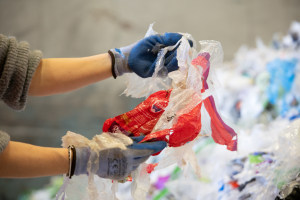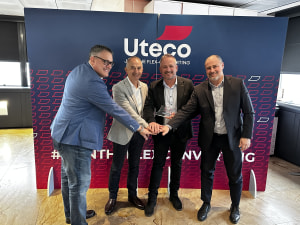As food manufacturers look to automation, digitisation, and streamlining operations, the excess food inventory tech platform, Yume, realised that business focus had to be capitalised on to reduce Australia’s food waste.
In the Schneider Electric Smart Food Lounge on Day 2 at foodpro 2023, Yume chief commercial officer Katherine Gokari-Whaley outlined how the company was working with large manufacturers to commercialise excess inventory at scale.
“The reason this is so important is because staggeringly, in Australia more than 7.2 million tonnes of food is wasted every year. And 42 per cent of that is at a commercial level, so before it gets to a supermarket or people’s homes,” Gokari-Whaley said.
She added that many large food manufacturers have signed pledges to achieve zero waste to landfill by 2030 or 2050, but most have inefficient excess stock management.
“A company has excess produce that is still edible and that reflects time and energy by the company. Usually, someone in the team who's already overworked is given the job of trying to sell these 10 tonnes so that they don't need to put it in the bin and that they can recoup some of their costs.
“And so, this person whose full-time job is probably selling full-time, full price to their full price customers, is now got the extra task of trying to get rid of this stock.”
The result is a piecemeal solution that takes time and still results in some if not all the stock going to landfill at another cost to the company and the environment.
It was Yume founder Katy Barfield who recognised something was needed at the top end of the supply chain to help businesses solve this problem.
“We wanted to really understand the complexities of the issue and build a system for the industry with the industry.
“We had some pilot partners – Mars, Unilever, General Mills, and Kellogg's – who basically opened the kimono and let us come in to understand what caused excess inventory, how they were currently manufacturing it, what they were doing with it, how efficient those processes were, and who was involved. We also asked those managing the excess inventory how happy they were with this part of their job on a scale of one to 10. The majority responded with a one.”
Gokari-Whaley added, “Excess inventory can be and often is a silent killer of performance.”
She explained that excess stock takes a lot of time from people who don’t have it. That it takes resources when you’re already under resourced and is often very manual, fragmented, and inefficient because it is not a company’s core business.
“Core business is selling for price stock you’re manufacturing. It’s non-core to have to deal with excess inventory and you’re not going invest heavily in it. You’re going to cobble together some sort of a process to minimise the amount you need to write off or waste.
“It’s not great for morale. And finally, it’s terrible for the planet and not great for your profits.”
A major issue Yume discovered was that because of how manual and fragmented systems were, there was no clear data on how much was being sold or donated.
“It was very clear the solution was a plug and play tech platform that would commercialise excess inventory and streamline donations.
“All of the manufacturers using the technology have confirmed that this is the way of the future and the way that they see this working.”
Gokari-Whaley said regardless of the shape of a company’s supply chain, whether it is linear or circular, there are leakage points, whether it is at inputs and raw ingredients, during the manufacturing process with by-products and imperfections, or with retail finished goods, which for myriad reasons can end up being an excess.
She said that feedback from the manufactures drove the maturation of the technology for retail finished goods, because it encompassed the entire production process.
“Companies said to us ‘We've not just invested in the raw inputs that we’ve put into this, or the time and resources, but also in the water, energy, and packaging’.”
For manufacturers that have used the platform for more than 12 months, they have increased the volume of excess sold 128 per cent on their existing internal process. There has been a 149 per cent increase on the net return, and 30 per cent more is being donated.
“Our threefold value proposition is that we increase net return and gross margin and reduce write off. We improve processes and efficiencies, which reduces costs. And finally, we’re helping businesses to operationalise sustainability.
“Giving manufacturers significant data stops sustainability being something off to the left in the business and pushes back through the whole business whether you are in supply chain, sales, or customer service, showing them that the actions they are undertaking are having positive results on people and the planet.”






